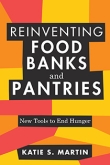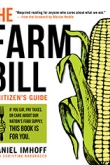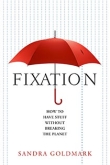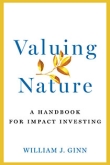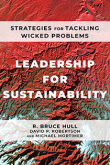Our current food system has decimated rural communities and confined the choices of urban consumers. Even while America continues to ramp up farm production to astounding levels, net farm income is now lower than at the onset of the Great Depression, and one out of every eight Americans faces hunger. But a healthier and more equitable food system is possible. In Building Community Food Webs, Ken Meter shows how grassroots food and farming leaders across the U.S. are tackling these challenges by constructing civic networks. Overturning extractive economic structures, these inspired leaders are engaging low-income residents, farmers, and local organizations in their quest to build stronger communities.
Community food webs strive to build health, wealth, capacity, and connection. Their essential element is building greater respect and mutual trust, so community members can more effectively empower themselves and address local challenges. Farmers and researchers may convene to improve farming practices collaboratively. Health clinics help clients grow food for themselves and attain better health. Food banks engage their customers to challenge the root causes of poverty. Municipalities invest large sums to protect farmland from development. Developers forge links among local businesses to strengthen economic trade. Leaders in communities marginalized by our current food system are charting a new path forward.
Building Community Food Webs captures the essence of these efforts, underway in diverse places including Montana, Hawai‘i, Vermont, Arizona, Colorado, Indiana, and Minnesota. Addressing challenges as well as opportunities, Meter offers pragmatic insights for community food leaders and other grassroots activists alike.
"It is an excellent primer on how local food systems can stanch the flow of wealth from rural communities and the importance of approaching these systems as social rather than logistical."
Journal of Agriculture, Food Systems, and Community Development
"Ken Meter is the most warmly-regarded and innovative mentor and hero among food activists all across the American continent. Many of the most pragmatic solutions for regional food communities have emerged out of Ken's deep reflection, micro-economic analysis, and crisp communications. Meter is not just another food writer; he is a national treasure."
Gary Paul Nabhan (Brother Coyote, OEF), author of "Jesus for Farmers and Fishers: Justice for All Those Marginalized by Our Food System"
"Connections, Convening, Collaboration and (reclaiming) Culture are the themes resonating through the eight stories of community food systems skillfully woven together by Ken Meter. Building Community Food Webs is illuminating for learning from the past and planning for the much-needed future of food system changes."
Anupama Joshi, Co-author, "Food Justice"; Co-founder, National Farm to School Network; Executive Director, Blue Sky Funders Forum
"Woven through stories that stretch decades, Building Community Food Webs gives critical insight into how communities have transformed agriculture and food economies. With a unique analysis of the economic landscape, Meter deftly highlights common threads that inspire the reader with multiple pathways and strategies."
Jeanette Abi-Nader, Food Equity Activist & Cultivate Charlottesville Executive Director
"From a hard-working visionary, Ken Meter’s book is full of the good ideas that will strengthen the next generation’s work to create food systems that foster equity and inclusivity. Ken provides us MUCH to learn and practice."
Alfonso Morales, Vilas Distinguished Achievement Professor, University of Wisconsin-Madison
Acknowledgments
Introduction
Chapter 1. The Extractive US Farm Economy
Chapter 2. Co-Learning Is Contagious
Chapter 3. Invoking Traditional Wisdom to Recover from Plantation Agriculture
Chapter 4. Building the Capacities and Voice of Low-Income Residents
Chapter 5. Placing Food Business Clusters at the Core of Economic Development
Chapter 6. The Cradle of Food Democracy: Athens (Ohio)
Chapter 7. Metro-Area Farmers Need Supportive Networks
Chapter 8. Municipal Officials Collaborate to Protect Metro Farmland
Chapter 9. Working Below the Radar to Create Networks of Green Space
Chapter 10. Building Market Power for Farmers
Chapter 11. Shifting from “Local Food” to "Community-Based Food Systems"
Chapter 12. Scale is Both the Problem and the Solution
Conclusion. Building Community Food Webs: Action Networks, System Levers, and Business Clusters
Definitions
References
Index
About the Author
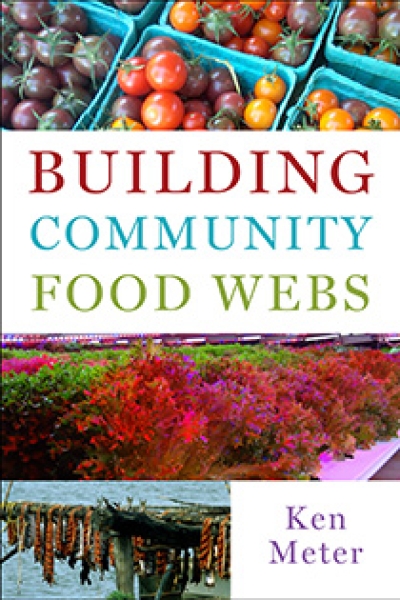
Ask Me Anything Featuring Ken Meter at University of California, Merced
Please join the University of California, Merced on Monday, 8/1 at 2 PM PDT for an AMA with Ken Meter.
Biography: Ken Meter is one of the most experienced food system analysts in the U.S., integrating market analysis, business development, systems thinking, and social concerns. Meter holds 50 years of experience in inner-city and rural community capacity building. His local economic analyses have promoted local food networks in 144 regions in 41 states, two provinces, and 4 tribal nations. He developed a $9.85-milllion plan for local food investment for the state of South Carolina, and completed similar studies for New Mexico, New Hampshire, Hawai‘i, Alaska, Mississippi, Indiana, Ohio, and Minnesota. He developed strategic regional food plans for nearly 20 regions across the U.S. Meter consulted with the USDA Agricultural Marketing Service and Colorado State University as one of 14 co-authors of a toolkit for measuring economic impacts of local food development. He is author of Building Community Food Webs, published by Island Press in 2021. He is one of 3 co-editors of Sustainable Food System Assessment: Lessons from Global Practice, published by Routledge (UK) in 2019. Meter is also a member of the International Economic Development Council, where he presented at several annual meetings. He has taught at the Harvard Kennedy School and the University of Minnesota.
This virtual event is free and open to the public.
Can't attend, but have a question for Ken? Email emeyer4@ucmerced.edu the question.
Read the Introduction and Chapter 1. The Extractive US Farm Economy below or download it here.


